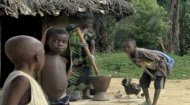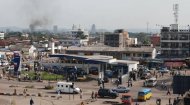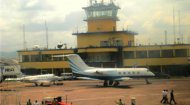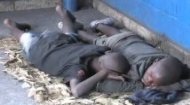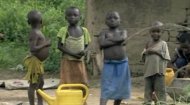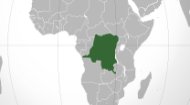|
The eastern provinces, particularly North Kivu, South Kivu, and Ituri, continue to suffer from the presence of over 120 armed groups, perpetuating violence, human rights abuses, and mass displacement. These groups, often driven by ethnic tensions, land disputes, and control over lucrative mineral resources, undermine the central government's authority and hinder development efforts. The mandate of the United Nations Organization Stabilization Mission in the Democratic Republic of Congo (MONUSCO), one of the largest peacekeeping missions globally, underscores the severity of the security challenges. While national elections aim to solidify democratic processes, issues of transparency, electoral integrity, and post-election violence frequently surface. Building robust and accountable governance, strengthening the rule of law, and fostering national cohesion are critical steps towards rooting a lasting peace and stability. Today the profile of the Democractic Republic of Congo reflects persistent political instability, armed conflict, and a dire humanitarian situation, particularly in the eastern region. Demographically, the DRC is a mosaic of over 200 ethnic groups, each contributing to a rich tapestry of languages, traditions, and customs. While French serves as the official language, widely spoken lingua francas include Lingala, Swahili, Kikongo, and Tshiluba, reflecting the country's regional diversity. The population is predominantly young, with a large majority under the age of 25, presenting both a demographic dividend and a significant challenge in terms of education, employment, and social services. |
DRC Country Profile |
DRC Country Profile |
DRC Country Profile | DRC Country Profile |
Facts, figures and video profile of education for children in the Democratic Republic of Congo.
More >
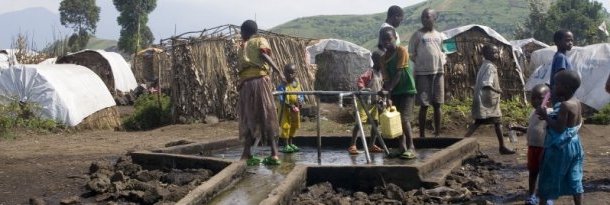
|
Today the country is home to 112,832,473 people in 2025, making it the 15th most populous country globally, and Africa's second largest country by size and the 11th largest in the world. The DRC is arguably the most resource-rich country on Earth, possessing vast reserves of minerals crucial to the global economy. It is the world's largest producer of cobalt and a significant producer of copper, coltan, diamonds, gold, tin, and tungsten. These minerals are vital for modern technologies, from smartphones to electric car batteries. The country also boasts immense agricultural potential, with fertile lands capable of feeding a population many times its size, and hydropower potential representing almost 13% of the world's total. Despite this extraordinary endowment, the DRC remains one of the poorest countries globally. This "paradox of plenty" is largely attributable to chronic misgovernance, corruption, illegal mining, and the continuous cycle of conflict, which deters legitimate investment and disrupts supply chains. The majority of the population relies on subsistence agriculture or the informal sector, with formal employment opportunities scarce. Infrastructure is severely underdeveloped, hindering economic activity and market access. Diversifying the economy beyond raw mineral extraction, investing in value-added processing, improving governance in the mining sector, and fostering a conducive environment for both domestic and foreign investment are seen as essential for translating its immense natural wealth into tangible economic stability and improved living standards for its citizens. It is ranked in 171st place out of 193 countries and territories in 2025 in terms of life expectancy, literacy, access to knowledge and living standards of its people. A large percentage of the Congolese population lives in extreme poverty, with estimates suggesting that over 70% live on less than $2.15 a day, according to the World Bank. This pervasive instability and poverty have profound impacts on the social stability and human development indicators in the DRC. The country faces persistent humanitarian crises, with millions of internally displaced persons (IDPs) and severe food insecurity affecting a significant portion of the population. Access to basic social services like healthcare, education, clean water, and sanitation remains critically limited, particularly in rural and conflict-affected areas. The DRC frequently grapples with outbreaks of diseases such as Ebola, cholera, and measles, compounded by a fragile health system. Education, though a priority for many families, is often unaffordable or inaccessible for children in conflict zones, girls in particular. Gender-based violence is rampant, and child labour, including in dangerous mining environments, is a tragic consequence of poverty. Despite these immense challenges, Congolese communities demonstrate remarkable resilience, often relying on traditional social safety nets and the vibrant networks of civil society organisations to cope with the ongoing adversity. Beneath the layers of conflict and hardship lies a vibrant and diverse cultural heritage. Congolese music, particularly genres like Rumba and Soukous, has achieved international acclaim, influencing musical trends across Africa and beyond. Kinshasa, the bustling capital, is a hub of artistic innovation, known for its dynamic music scene, fashion, and contemporary art. Traditional art forms, including elaborate masks, sculptures, and textiles, reflect the spiritual beliefs and historical narratives of the country's many ethnic groups. Religion plays a significant role the daily life profile of DRC, with Christianity being the dominant faith, often blended with traditional spiritual beliefs. Storytelling, dance, and music are integral to community life and the preservation of cultural identity. This rich cultural landscape provides a source of pride, solace, and resilience for the Congolese people, a testament to their enduring spirit.
For the average Congolese citizen, daily life is often a testament to remarkable resilience in the face of daunting odds. Access to reliable electricity, clean water, and adequate sanitation is a luxury for many, particularly outside major urban centres. The informal economy is the backbone of survival, with individuals engaging in small-scale trading, farming, or artisanal mining to make ends meet. Commuting in sprawling cities like Kinshasa is a chaotic dance of shared taxis, motorcycles, and walking, often through unpaved roads. Despite the hardships, community ties are strong, and family remains the central pillar of support. There is a palpable sense of hope and entrepreneurship, an eagerness among the youth to embrace technology and create opportunities for themselves. Yet, the ever-present threat of violence in some regions, the struggle for basic necessities, and the pervasive impact of poverty cast a long shadow over their existence. Find out more about the Democratic Republic of Congo in our DRC profile pages above. |
